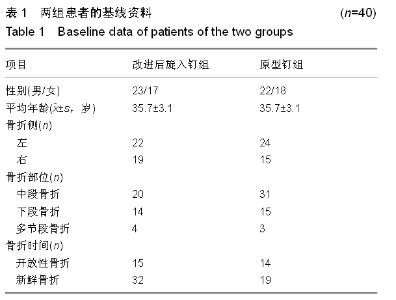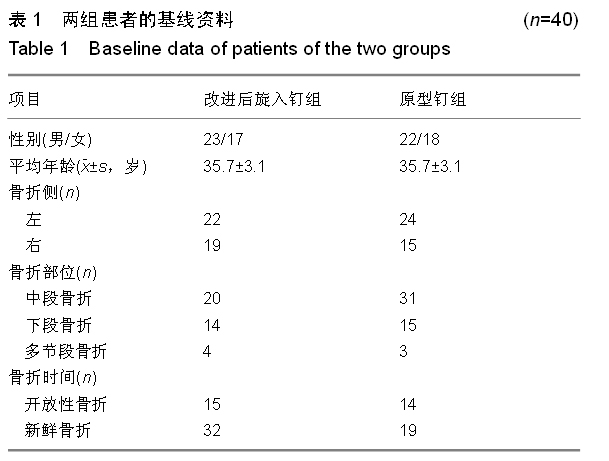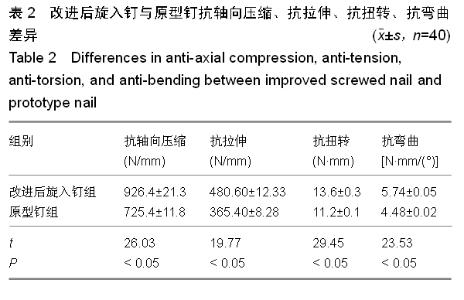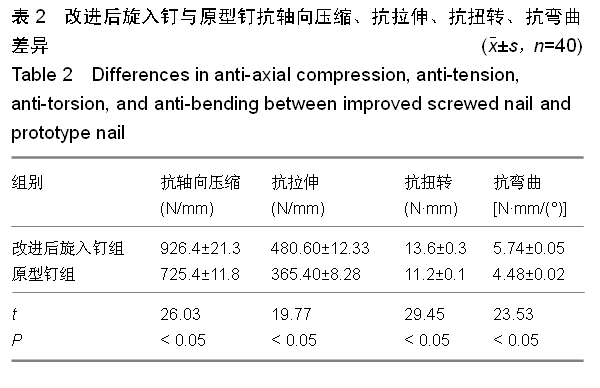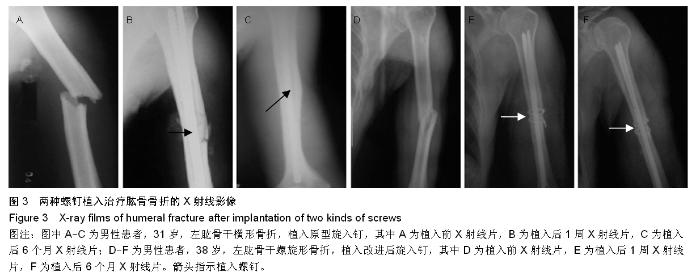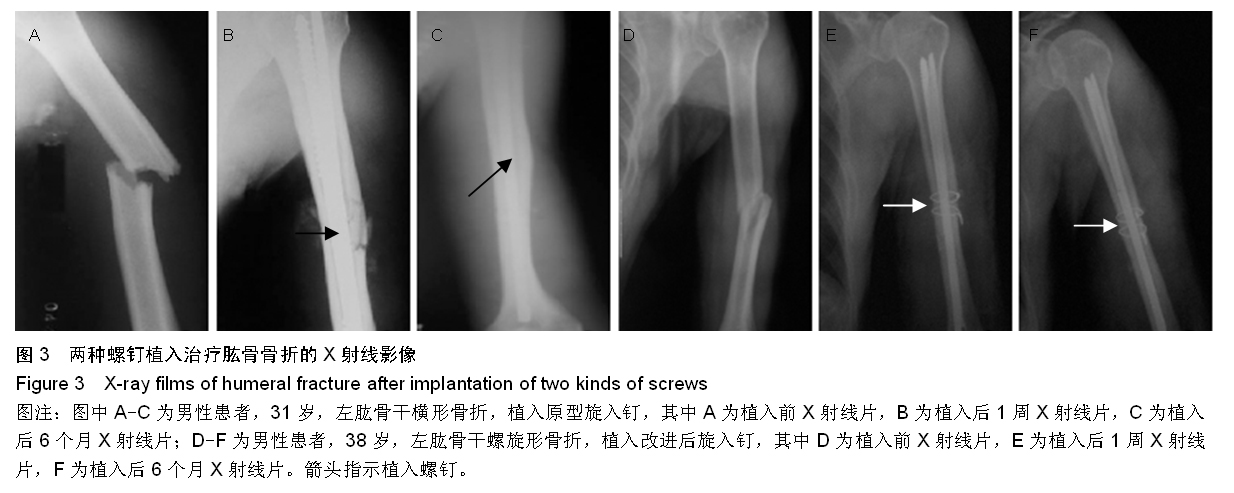Chinese Journal of Tissue Engineering Research ›› 2015, Vol. 19 ›› Issue (35): 5712-5717.doi: 10.3969/j.issn.2095-4344.2015.35.025
Previous Articles Next Articles
Biomechanical test of improved retrograde screwed nail
Zhao Qin-peng, Zhang Zheng-ping, Hao Ding-jun
- Department of Spine Surgery, Xi’an Red Cross Hospital Affiliated to Xi’an Jiaotong University School of Medicine, Xi’an 710054, Shaanxi Province, China
-
Received:2015-07-13Online:2015-08-27Published:2015-08-27 -
Contact:Hao Ding-jun, Master, Chief physician, Department of Spine Surgery, Xi’an Red Cross Hospital Affiliated to Xi’an Jiaotong University School of Medicine, Xi’an 710054, Shaanxi Province, China -
About author:Zhao Qin-peng, Master, Master’s supervisor, Associate chief physician, Department of Spine Surgery, Xi’an Red Cross Hospital Affiliated to Xi’an Jiaotong University School of Medicine, Xi’an 710054, Shaanxi Province, China -
Supported by:the Special Science and Technology Program Benefiting the People of Department of Science and Technology of Shaanxi Province, No. 2013k14-02-13
CLC Number:
Cite this article
Zhao Qin-peng, Zhang Zheng-ping, Hao Ding-jun. Biomechanical test of improved retrograde screwed nail [J]. Chinese Journal of Tissue Engineering Research, 2015, 19(35): 5712-5717.
share this article
| [1] 刘国栋,魏春群,王书明,等.带锁旋入式髓内针治疗肱骨骨折[J].生物骨科材料与临床研究,2008,5(5):41-42. [2] 李长胜.旋入式自锁髓钉治疗肱骨干骨折40例分析[J].山西医药杂志(下半月版),2008,37(22):994-995. [3] 韩伟,田晓滨,李波,等.旋入式自锁髓内钉与加压钢板治疗20例肱骨骨折疗效分析[J].贵州医药,2008,32(8):729. [4] 姚仁福.旋入式自锁髓内钉在肱骨干骨折中的应用[J].解剖与临床,2008,13(6):439-440. [5] 姜泳,姬常功,位学东.旋入式自锁髓内钉在肱骨骨折治疗中的应用[J].临床骨科杂志,2008,11(4):375. [6] 刘云华,王伟,谢文军,等.旋入式自锁髓内针治疗肱骨干骨折32例分析[J].检验医学与临床,2009,6(14):1190-1191. [7] 向峥,郭振河,李敬中,等.旋入式髓内钉微创治疗肱骨干骨折的疗效分析[J].中国矫形外科杂志,2007,15(12):898-900. [8] 李春青,洪云峰,杨荣华,等.逆行旋入式自锁髓内钉治疗肱骨骨折[J].实用骨科杂志,2009,15(10):781-782. [9] 韩一生,赵广跃,刘建,等.非扩髓型肱骨内锁髓内钉的研制和临床应用[J].中华骨科杂志,1997,17(4):229-232. [10] 李振年,刘斌成,徐继新,等.带锁髓内针与旋入式自锁髓内针治疗长管状骨干骨折的比较[J].中国现代药物应用,2010,4(6):33-34. [11] 尤微,王大平,熊建义.顺行旋入式髓内钉治疗肱骨干骨折疗效观察[J].中国现代手术学杂志,2008,12(4):280-282. [12] 臧伟,刘云峰,武全民.微创旋入钉内固定技术治疗伴桡神经麻痹的肱骨干中下段骨折[J].中国骨伤,2009,22(7):515-517. [13] 马胜忠,李明,侯铁胜.骨质疏松性脊柱压缩性骨折的手术治疗[J].中国矫形外科杂志,2002,9(6):603-604. [14] Jeon SW, Jeong JH, Choi GH, et al. Clinical outcome of posterior fixation of the C1 lateral mass and C2 pedicle by polyaxial screw and rod. Clin Neurol Neurosurg. 2012;114(6): 539-544. [15] 池永龙,林焱,毛方敏,等.几种椎弓根钉内固定器的生物力学测试与临床应用[J].中国脊柱脊髓杂志,2001,11(3):78-80. [16] Meyer D, Meyer F, Kretschmer T, et al. Translaminar screws of the axis--an alternative technique for rigid screw fixation in upper cervical spine instability. Neurosurg Rev. 2012;35(2): 255-261;discussion 261. [17] Pelton MA, Schwartz J, Singh K. Subaxial cervical and cervicothoracic fixation techniques--indications, techniques, and outcomes. Orthop Clin North Am. 2012; 43(1):19-28, vii. [18] 陈德龙,陈小龙,向道友,等.椎弓根螺钉在多节段胸腰椎骨折的应用[J].西部医学,2008,20(5):967-968. [19] 王洪伟,李长青,周跃,等.脊柱骨折经伤椎椎弓根置钉附加横连短节段固定的稳定性测试[J].中国脊柱脊髓杂志,2010,20(9): 745-749. [20] 丁援建,陈智良,赵谦,等.个体化选定椎弓根螺钉入钉点治疗胸腰段脊柱骨折[J].中国脊柱脊髓杂志,2003,13(6):364-367. [21] Panjabi MM. Biomechanical evaluation of spinal fixation devices: I. A conceptual framework. Spine (Phila Pa 1976). 1988;13(10):1129-1134. [22] Dick JC, Jones MP, Zdeblick TA, et al. A biomechanical comparison evaluating the use of intermediate screws and cross-linkage in lumbar pedicle fixation. J Spinal Disord. 1994; 7(5):402-407. [23] 胡樵,黄勇,赵东升,等.胸腰椎骨折伤椎椎弓根内固定的生物力学研究[J].河北医学,2008,14(7):757-758. [24] 魏美钢,王坤正,侯德门,等.椎弓根螺钉器械横杆作用的生物力学研究[J].西安医科大学学报,2002,23(1):47-49. [25] 殷渠东,郑祖根,蔡建平,等.椎弓根螺钉固定相对稳定性的体外生物力学试验[J].江苏医药,2005,31(2):119-122. [26] 武启军,王自立,戈朝晖,等.脊柱单节段前中柱切除后不同节段椎弓根螺钉内固定的稳定性测试[J].中国脊柱脊髓杂志,2010, 20(4):267-269. [27] 王志荣,杨惠林,王根林.胸腰椎椎弓根螺钉内固定系统的设计进展[J].中国脊柱脊髓杂志,2008,18(10):791-794. [28] 王向阳,池永龙.加强和维持椎弓根螺钉系统稳定性的研究进展[J].中国矫形外科杂志,2002,9(1):57-59. [29] 王岩,卢世璧,张永刚,等.形状记忆合金脊柱侧凸矫正系统的设计与临床应用[J].中国矫形外科,2005,13(17):1289-1292. [30] 邵景范,Sarkar MR,Claes IE,等.新型陶瓷改善椎弓根螺钉稳定性的研究[J].华中科技大学学报(医学版),2002,31(3):307-309. [31] Nakashima H, Yukawa Y, Imagama S, et al. Complications of cervical pedicle screw fixation for nontraumatic lesions: a multicenter study of 84 patients. J Neurosurg Spine. 2012; 16(3):238-247. [32] Deen HG, Birch BD, Wharen RE, et al. Lateral mass screw-rod fixation of the cervical spine: a prospective clinical series with 1-year follow-up. Spine J. 2003;3(6):489-495. [33] Amato V, Giannachi L, Irace C, et al. Accuracy of pedicle screw placement in the lumbosacral spine using conventional technique: computed tomography postoperative assessment in 102 consecutive patients. J Neurosurg Spine. 2010;12(3): 306-313. [34] Miyamoto H, Sumi M, Uno K. Utility of modified transarticular screw in the middle and lower cervical spine as intermediate fixation in posterior long fusion surgery. J Neurosurg Spine. 2009;11(5):555-561. [35] Yukawa Y, Kato F, Yoshihara H, et al. Cervical pedicle screw fixation in 100 cases of unstable cervical injuries: pedicle axis views obtained using fluoroscopy. J Neurosurg Spine. 2006; 5(6):488-493. [36] Richter M, Cakir B, Schmidt R. Cervical pedicle screws: conventional versus computer-assisted placement of cannulated screws. Spine (Phila Pa 1976). 2005;30(20): 2280-2287. [37] Neo M, Sakamoto T, Fujibayashi S, et al. The clinical risk of vertebral artery injury from cervical pedicle screws inserted in degenerative vertebrae. Spine (Phila Pa 1976). 2005;30(24): 2800-2805. [38] Ishikawa Y, Kanemura T, Yoshida G, et al. Intraoperative, full-rotation, three-dimensional image (O-arm)-based navigation system for cervical pedicle screw insertion. J Neurosurg Spine. 2011;15(5):472-478. [39] Pateder DB, Carbone JJ. Lateral mass screw fixation for cervical spine trauma: associated complications and efficacy in maintaining alignment. Spine J. 2006;6(1):40-43. [40] Ludwig SC, Kramer DL, Balderston RA, et al. Placement of pedicle screws in the human cadaveric cervical spine: comparative accuracy of three techniques. Spine (Phila Pa 1976). 2000;25(13):1655-1667. [41] Rajasekaran S, Kanna PR, Shetty AP. Safety of cervical pedicle screw insertion in children: a clinicoradiological evaluation of computer-assisted insertion of 51 cervical pedicle screws including 28 subaxial pedicle screws in 16 children. Spine (Phila Pa 1976). 2012;37(4):E216-223. [42] Uehara M, Takahashi J, Ikegami S, et al. Screw perforation features in 129 consecutive patients performed computer-guided cervical pedicle screw insertion. Eur Spine J. 2014;23(10):2189-2195. [43] Kawaguchi Y, Nakano M, Yasuda T, et al. Development of a new technique for pedicle screw and Magerl screw insertion using a 3-dimensional image guide. Spine (Phila Pa 1976). 2012;37(23):1983-1988. [44] Sciubba DM, Noggle JC, Vellimana AK, et al. Radiographic and clinical evaluation of free-hand placement of C-2 pedicle screws. Clinical article. J Neurosurg Spine. 2009;11(1):15-22. [45] Tauchi R, Imagama S, Sakai Y, et al. The correlation between cervical range of motion and misplacement of cervical pedicle screws during cervical posterior spinal fixation surgery using a CT-based navigation system. Eur Spine J. 2013;22(7): 1504-1508. [46] Lee KH, Kang DH, Lee CH, et al. Inferolateral entry point for c2 pedicle screw fixation in high cervical lesions. J Korean Neurosurg Soc. 2011;50(4):341-347. [47] 何斌,王云华,袁同洲,等.MIIGX3强化椎弓根螺钉固定的生物力学研究[J].生物医学工程研究,2008,27(2):97-98. [48] 林焱,池永龙,徐华梓,等.四种脊柱内固定器的生物力学评价[J].温州医学院学报,2000,30(3):203-205. [49] 雍明,吴继功,马华松,等.万向椎弓根钉在不同矢状角下把持力的生物力学测试[J].安徽医学,2011,32(8):1110-1114. [50] Ishikawa Y, Kanemura T, Yoshida G, et al. Intraoperative, full-rotation, three-dimensional image (O-arm)-based navigation system for cervical pedicle screw insertion. J Neurosurg Spine. 2011;15(5):472-478. [51] 吴子祥,雷伟.膨胀式椎弓根螺钉抗旋出性能的生物力学测试[J].中国矫形外科杂志,2004,12(9):695-698. [52] 罗亚平,沈强.增强椎弓根螺钉系统对脊柱固定稳定性的研究进展[J].实用骨科杂志,2003,9(3):236-238. [53] 杨立利,陈华江,陈德玉,等.计算机辅助导航技术在脊柱侧凸手术中应用的初步经验[J].中国矫形外科杂志,2007,15(23): 1773-1776. [54] 陈玉兵,陆声,徐永清,等.快速成型个体化导航模板辅助胸椎椎弓根螺钉置入可行性研究[J].中国矫形外科杂志,2009,17(20): 1557-1560. |
| [1] | Xu Feng, Kang Hui, Wei Tanjun, Xi Jintao. Biomechanical analysis of different fixation methods of pedicle screws for thoracolumbar fracture [J]. Chinese Journal of Tissue Engineering Research, 2021, 25(9): 1313-1317. |
| [2] | Chen Xinmin, Li Wenbiao, Xiong Kaikai, Xiong Xiaoyan, Zheng Liqin, Li Musheng, Zheng Yongze, Lin Ziling. Type A3.3 femoral intertrochanteric fracture with augmented proximal femoral nail anti-rotation in the elderly: finite element analysis of the optimal amount of bone cement [J]. Chinese Journal of Tissue Engineering Research, 2021, 25(9): 1404-1409. |
| [3] | Zhou Jihui, Li Xinzhi, Zhou You, Huang Wei, Chen Wenyao. Multiple problems in the selection of implants for patellar fracture [J]. Chinese Journal of Tissue Engineering Research, 2021, 25(9): 1440-1445. |
| [4] | Xu Yulin, Shen Shi, Zhuo Naiqiang, Yang Huilin, Yang Chao, Li Yang, Zhao Heng, Zhao Lu. Biomechanical comparison of three different plate fixation methods for acetabular posterior column fractures in standing and sitting positions [J]. Chinese Journal of Tissue Engineering Research, 2021, 25(6): 826-830. |
| [5] | Cai Qunbin, Zou Xia, Hu Jiantao, Chen Xinmin, Zheng Liqin, Huang Peizhen, Lin Ziling, Jiang Ziwei. Relationship between tip-apex distance and stability of intertrochanteric femoral fractures with proximal femoral anti-rotation nail: a finite element analysis [J]. Chinese Journal of Tissue Engineering Research, 2021, 25(6): 831-836. |
| [6] | Song Chengjie, Chang Hengrui, Shi Mingxin, Meng Xianzhong. Research progress in biomechanical stability of lateral lumbar interbody fusion [J]. Chinese Journal of Tissue Engineering Research, 2021, 25(6): 923-928. |
| [7] | Xie Chongxin, Zhang Lei. Comparison of knee degeneration after anterior cruciate ligament reconstruction with or without remnant preservation [J]. Chinese Journal of Tissue Engineering Research, 2021, 25(5): 735-740. |
| [8] | Nie Shaobo, Li Jiantao, Sun Jien, Zhao Zhe, Zhao Yanpeng, Zhang Licheng, Tang Peifu. Mechanical stability of medial support nail in treatment of severe osteoporotic intertrochanteric fracture [J]. Chinese Journal of Tissue Engineering Research, 2021, 25(3): 329-333. |
| [9] | Tan Jiachang, Yuan Zhenchao, Wu Zhenjie, Liu Bin, Zhao Jinmin. Biomechanical analysis of elastic nail combined with end caps and wire fixation for long oblique femoral shaft fractures [J]. Chinese Journal of Tissue Engineering Research, 2021, 25(3): 334-338. |
| [10] | Chen Lu, Zhang Jianguang, Deng Changgong, Yan Caiping, Zhang Wei, Zhang Yuan. Finite element analysis of locking screw assisted acetabular cup fixation [J]. Chinese Journal of Tissue Engineering Research, 2021, 25(3): 356-361. |
| [11] | Zhou Jihui, Li Xinzhi, Zhou You, Huang Wei, Chen Wenyao. Comparison of the advantages and disadvantages of multiple implants in treatment of traumatic dislocation of sternoclavicular joint [J]. Chinese Journal of Tissue Engineering Research, 2021, 25(3): 443-448. |
| [12] | Li Kun, Li Zhijun, Zhang Shaojie, Gao Shang, Sun Hao, Yang Xi, Wang Xing, Dai Lina . A 4-year-old child model of occipito-atlanto-axial joints established by finite element dynamic simulation [J]. Chinese Journal of Tissue Engineering Research, 2021, 25(24): 3773-3778. |
| [13] | Sun Maji, Wang Qiuan, Zhang Xingchen, Guo Chong, Yuan Feng, Guo Kaijin. Development and biomechanical analysis of a new anterior cervical pedicle screw fixation system [J]. Chinese Journal of Tissue Engineering Research, 2021, 25(24): 3821-3825. |
| [14] | Zhu Yun, Chen Yu, Qiu Hao, Liu Dun, Jin Guorong, Chen Shimou, Weng Zheng. Finite element analysis for treatment of osteoporotic femoral fracture with far cortical locking screw [J]. Chinese Journal of Tissue Engineering Research, 2021, 25(24): 3832-3837. |
| [15] | Liu Jinyu, Ding Yiwei, Lu Zhengcao, Gao Tianjun, Cui Hongpeng, Li Wen, Du Wei, Ding Yu. Finite element biomechanical study of full endoscopic fenestration decompression for cervical spondylotic myelopathy [J]. Chinese Journal of Tissue Engineering Research, 2021, 25(24): 3850-3854. |
| Viewed | ||||||
|
Full text |
|
|||||
|
Abstract |
|
|||||
